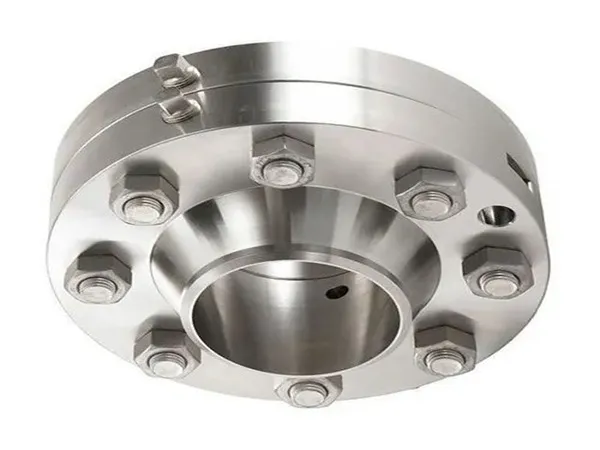Flange Orifice Plate
Elite Piping Manufacture is a powerful flange orifice plate manufacturer. Flange orifice plate is the main business direction of Elite Piping Manufacture. We have always regarded meeting customer requirements as the core of our business operations. We strictly control quality and strive to improve efficiency. Our company persists and strives to provide demand groups with flange orifice plates that meet market needs.
REFINE BY
- Flange Manufacturer
- Flange standard
- Welding Neck Flange
- Stainless steel Flange
- Carbon & Alloy steel Flange
- Blind Flange
- Lap Joint Flange
- Orifice Flange
- Threaded Flange
- Swivel Ring Flange
- Reducing Flange
- Slip-On Flange
- Spectacle Blind Flange
- Compact Flange
- 1/2" (24)
- 3/4" (24)
- 1" (24)
- 1-1/4" (24)
- 1-1/2" (24)
- 2" (25)
- 2-1/2" (24)
- 3" (24)
- 4" (20)
- 4" (20)
- 304L (179)
- 316L (179)
Raised Face Blind Flange Models
The plate orifice flange is a component of the orifice plate flowmeter, which appears in pairs. The plate orifice flange uses the pressure difference on both sides of the flow orifice plate to measure and then calculates the material’s flow rate based on the formula.
The flange orifice plate consists of a flow orifice plate, an orifice plate flange, a pressure guiding tube, and a differential pressure flow transmitter.
flange orifice plate are usually raised faces or ring connection faces. They are generally the same as standard neck butt welding flanges and neck flat welding flanges, except for more machining.
The picture below shows an orifice plate flange group, with an orifice plate in the middle and lifting bolts on the flange. The function of the lifting bolt is to help the flange separate so that the orifice plate and flange gasket can be inspected or replaced.

The orifice flow meter manufacturing and installation technology is most commonly used in natural gas measurement. It consists of a throttling device, a pressure guide tube, a differential pressure meter, a pressure gauge, and a thermometer.

Under normal circumstances, its measurement accuracy can meet the requirements of national standards and Ministry of Petroleum standards.
However, in actual work, since the design, manufacture, installation, and use of the throttling device do not meet the standard requirements, improper parameter selection, user load changes, inaccurate manual value selection, and other reasons affect flow measurement accuracy to varying degrees.
The throttling device, a differential pressure flow meter, comprises a primary detection component (throttle component) and a secondary device (differential pressure transmitter and flow indicator). It is widely used in gases. Flow measurement of steam and liquids. It has a simple structure, convenient maintenance, and stable performance.
Therefore, finding out the causes and solutions of orifice flowmeter measurement errors is an important task related to accurate measurement.
The Application Of A Flange Orifice Plate
The orifice plate flowmeter is a high-range differential pressure flow device composed of a standard orifice plate and a multi-parameter differential pressure transmitter (or differential pressure transmitter, temperature transmitter, and pressure transmitter).
It can measure gas, steam, liquid, and pilot flow, and it is widely used in process control and measurement in petroleum, chemical industry, metallurgy, electric power, heating, water supply, and other fields.
Flange Orifice Plate Manufacturing And Installation
When using an orifice plate flowmeter, the technical requirements for orifice plate processing are very strict and must comply with the provisions of national standards or ministerial standards. Otherwise, errors will be caused in the natural gas flow measurement results.

- Orifice plate eccentricity: Experiments show that the measurement error caused by orifice plate eccentricity is generally within 2%. The higher the aperture ratio β value, the greater the impact of eccentricity. Therefore, orifice plates with high β values should be avoided.
- Orifice plate bending: Due to improper installation or maintenance, the orifice plate is bent or deformed, resulting in large flow measurement errors. The test results were carried out on the orifice plate where the flange takes pressure. The maximum error caused by the bending of the orifice plate is about 3.5%.
- Protrusions in the throttling device: Gaskets, welds, etc., that protrude into the pipe in the throttling device will also cause certain errors in flow measurement. The error size depends on the position of the protrusions, the distance between the orifice plate and the protrusions, and The height of the highlight.
Ways To Improve Measurement Accuracy
- Pipeline requirements: National standards have strict technical requirements for metering pipe length, straight pipe, roundness, and internal surface roughness. When the minimum length of the metering tube cannot meet the standard requirements, the flow measurement results will be reduced. The size is related to the aperture ratio β and Reynolds number. Therefore, a rectifier must be installed on the straight pipe before the orifice plate to ensure measurement accuracy.
- Installation requirements: The inlet end face of the orifice plate must be perpendicular to the axis of the pipeline, and its deviation cannot exceed 1 degree.
- When installing the orifice plate, pay attention to the direction of the pipe. Reverse installation is strictly prohibited and must comply with the standard requirements for non-axial tolerance. The thickness of the sealing gasket between the flange, orifice plate, and pressure-sensing device shall not be greater than 0.03D.
- The gasket installation shall not protrude into the straight pipe section or the inner cavity of the pressure-tapping device, block the pressure-tapping port, or cause a change in the pressure-tapping position.
- In a newly built station, the orifice plate must be installed on the throttling device after the pipeline has been purged and run for several days to prevent it from being damaged or contaminated by liquid and solid impurities in the gas.
Regulations On Conditions For The Use Of Flange Orifice Plates
- The measured medium should fill the entire pipeline section and flow continuously.
- The flow stream (flow state) in the pipeline should be stable.
- The measured medium should not undergo phase change when passing through the orifice plate (for example: the liquid should not evaporate, and the gas dissolved in the liquid should not be released), and should exist in a single phase.
- A Condensate or dust that is precipitated when measuring gas (steam) flow or gas or sediment that is precipitated when measuring liquid flow must not accumulate near the orifice plate in the pipeline nor the connecting pipe.
- When measuring the flow rate of media that can cause clogging of the orifice plate, the core must be cleaned regularly.
Precautions For Orifice Plate Flange
Orifice plate flanges are easy to install and low-cost because of their simple manufacturing process. Therefore, they are widely used, but special attention should be paid when using them, especially when measuring corrosive media and media containing dust with flow.
Always observe whether the measurement results are accurate to prevent corrosion and blockage of the pressure port.
If the measurement error is too large, or the measurement cannot be performed at all, the orifice plate should be cleaned during the annual overhaul. A new orifice plate should be replaced immediately if serious corrosion is found.
If you are interested in our flange orifice plates, you are welcome to contact us.
GET IN TOUCH
Company:
bazhou elite s
d manufacture co.,ltd.
Factory Address:
Office # 805, Building No. 6 Poly Metropolitan, Yongshum Town, Tongzhou District, Beijing, China.
Contact Person:
Thomas
Contact Numbers:
+86 88888888888
Email:
sales@ematal.com





